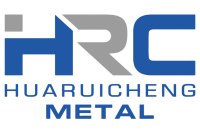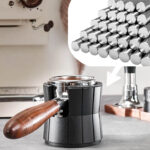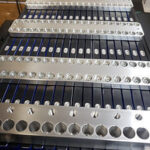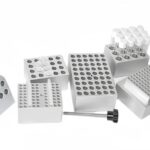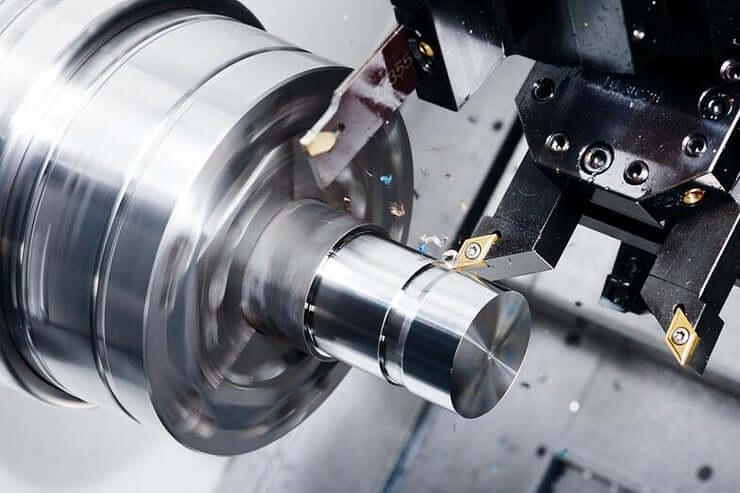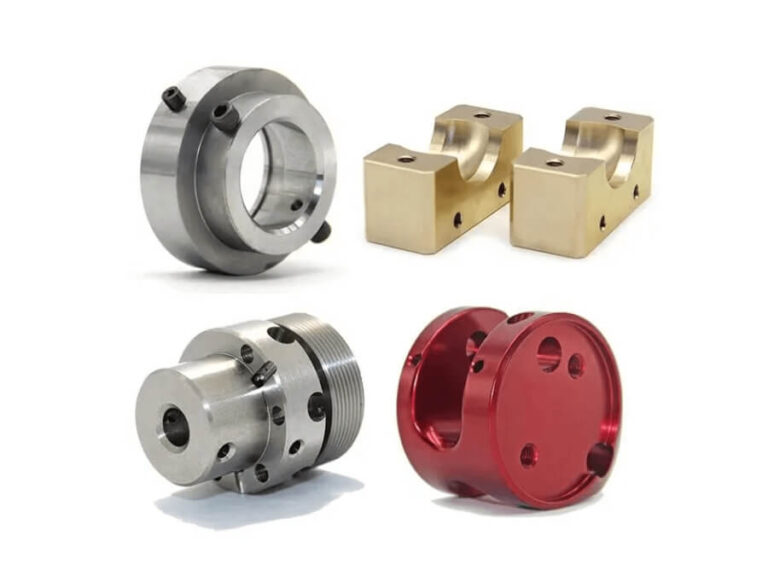CNC Turning
Our quick and accurate CNC turning services come with comprehensive guidance and support for clients, starting from the initial stages and continuing all the way through to the final completion of parts at our CNC machining center.
What Is CNC Turning?
CNC turning is a manufacturing process that involves removing material from a rotating workpiece using stationary cutting tools on a CNC lathe. The workpiece is mounted on a rotating chuck, and the cutting tools follow a linear path to shape the material. This method is particularly well-suited for creating parts with symmetry along their center axis, such as cylinders or cones. CNC turning is known for its efficiency, often producing parts faster and at a lower cost compared to milling.
At HRC Metal’s CNC turning center, we specialize in producing complex, precision-dimensioned custom parts using advanced CNC lathes. Whether you need high-quality metal or plastic components for rapid prototyping or low-volume production, our capabilities ensure exceptional results for your manufacturing needs.
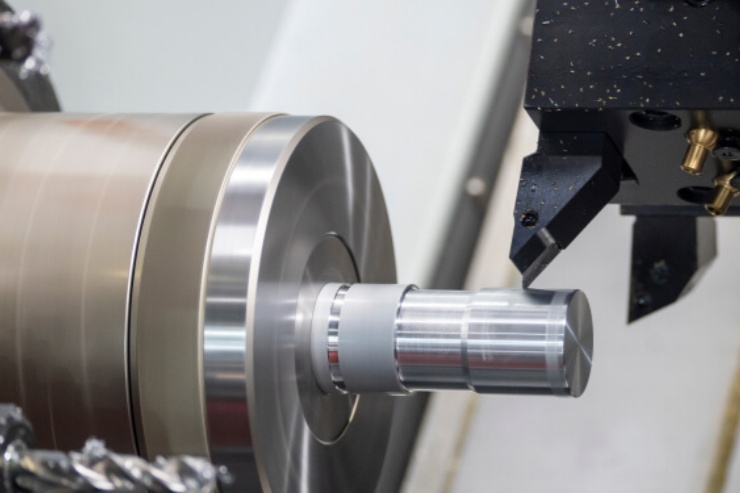
CNC Turning
Technical Data
Available diameters: 1 mm – 5.300 mm
Available lengths: 0.5 mm – 20,000 mm
Tolerances: Up to +/- 0.05 mm
Surface roughness: Up to Ra 0.8 / Rz3.2
Materials: Over 600 materials
Lot sizes: From 1 piece
Our Materials
Available Materials
We stock a range of metal materials that are suitable for various part applications and industries. Choose from aluminum, brass, low carbon steel, stainless steel, steel alloy, and titanium for turned parts.
- Aluminum
- Stainless Steel
- Steel Alloy
- Brass
- Low Carbon Steel
- Titanium
Why Choose CNC Turning?
- Precision Machining for Rotary Surfaces
If your parts demand high precision, such as controlled concentricity, stable runout, or accurate threaded profiles, CNC turning is the ideal solution. - Automation and Cost Efficiency
CNC lathes operate with high automation, ensuring efficient production while minimizing labor costs. This process is highly scalable, making it suitable for both low- and high-volume production without significant cost increases. - Wide Range of Compatible Materials
CNC turning supports an extensive variety of metal and plastic materials. Metals like aluminum, steel, stainless steel, brass, copper, magnesium alloy, and titanium alloy, as well as plastics such as ABS, POM, PEEK, acrylic, and nylon, are all compatible. - Multi-Tasking Capabilities with Mill-Turn Lathes
Multi-axis CNC turning centers and mill-turn lathes enable multi-step machining operations on a single machine. This capability makes them a cost-effective choice for producing complex geometries.
CNC Turning Services for Metal and Plastic Components
CNC Metal Turning Parts
Aluminum machining is a core service in HRC Metal’s offerings, but CNC turning extends to a variety of other metals, including stainless steel, steel, brass, copper, bronze, titanium, and nickel alloys.
CNC turning is particularly well-suited for producing mechanical and aesthetic components, many of which are crafted from aluminum due to its excellent machinability. This process allows for the creation of aluminum parts with high strength, precision, and an exceptional surface finish, making it ideal for a wide range of applications.
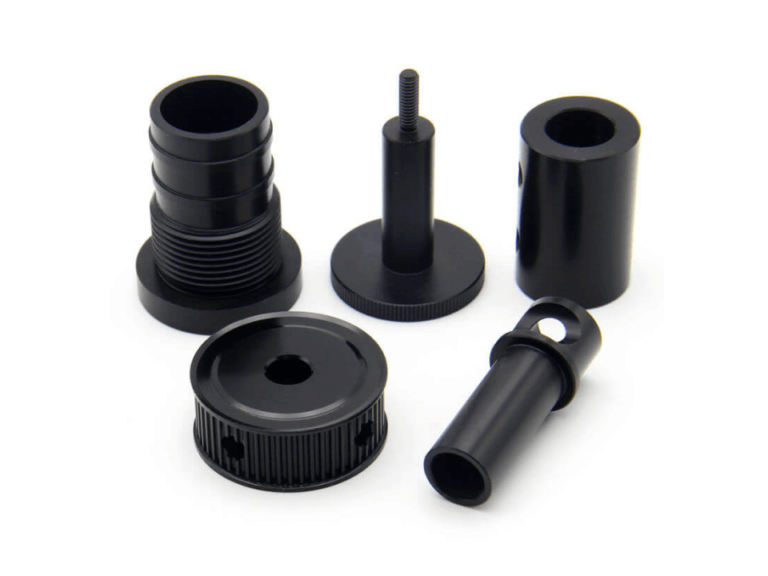
CNC Plastics Turning Parts
While precision machining is often associated with metals, HRC Metal also offers CNC turning services for plastic components. The materials available for CNC turning include nylon, polycarbonate, ABS, POM, PP, PMMA, PTFE, PEI, and PEEK. This process delivers higher accuracy and superior quality compared to 3D printing, making it an excellent choice for precision plastic parts.
How Does CNC Turning Work?
During turning, the clamped workpiece made of machinable material such as metal or plastic rotates at high speed. The turning tool attached to the tool slide moves against the bar stock workpiece in a feed motion and removes material. For this reason, all machining processes such as turning, but also milling, are referred to as subtractive processes.
On modern machining centers, driven tools combine various turning and milling techniques. For example, wrench flats, threads or hexagonal can be produced directly on one machine.
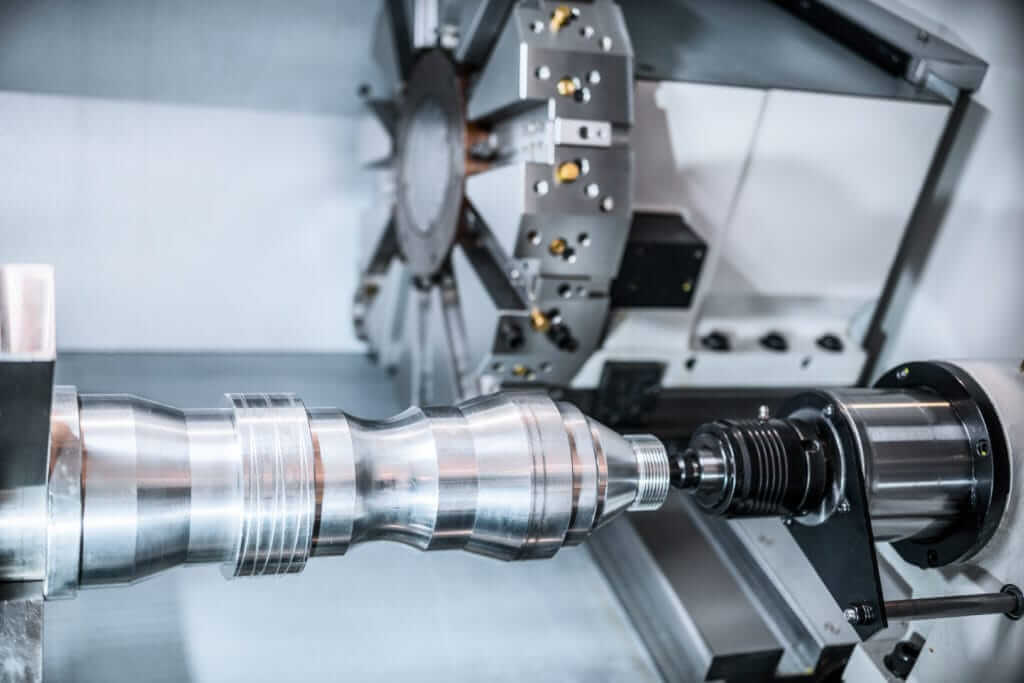
CNC Turning FAQs
What is a CNC turning center?
A CNC Turning Center performs a turning-type operation. CNC lathes, or turning centers, have tooling mounted on a computer-controlled turret. CNC Turning is a process in manufacturing where workpieces are rotated as various tools are used to remove material and create the desired shape.
What are the benefits of CNC turning?
A CNC turning center offers more than just turning tools; it can also be equipped with rotating cutters like end mills or drills. This versatility enables greater machining freedom, such as handling asymmetrical features in parts. As a result, it boosts production speed, efficiency, cost-effectiveness, and operational safety.
Turning has several unique advantages compared to milling, including the ease of achieving radial symmetry, high precision from mounting parts in a chuck, and excellent surface finishes. These features make CNC turning centers highly effective for a wide range of machining tasks.
What parts can be made with CNC turning?
CNC turning is a versatile process used to produce a wide range of components, such as auto parts, knobs, tubes, gears, toy parts, flywheels, crankshafts, hubs, and disc cams. It is widely employed in industries like automotive, aerospace, medical, and more, making it a critical manufacturing method for precision parts across various sectors.
What is the difference between rough turning and finish turning?
Rough turning focuses on removing the bulk of the material quickly, prioritizing speed over precision and surface finish. It brings the workpiece close to its final shape. In contrast, finish turning refines the part, achieving the required smoothness, precision, and final dimensions. Together, these two steps ensure efficient material removal and high-quality results.
What is the difference between CNC turning centers and CNC lathes?
CNC lathes typically feature two axes and a single spindle, limiting their production capacity. They often lack protective casings, making them less versatile. In contrast, CNC turning centers represent a more advanced evolution of CNC lathes. With up to five axes and enhanced cutting capabilities, they offer greater flexibility and efficiency. These centers can handle larger production volumes and often combine multiple functions, such as milling and drilling, into a single machine.
